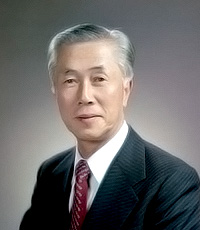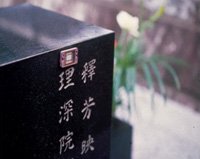Japanese Pioneers
Kazuo Iwama

Kazuo Iwama was born on February 7, 1919. After graduating from the Geophysics Department of the Faculty of Science at Tokyo Imperial University in 1942, he entered the university’s Earthquake Research Institute before starting to work for Tokyo Tsushin Kogyo K.K. (Tokyo Telecommunications Engineering Corporation, presently Sony Corporation) in 1946. In 1954, he went to the U.S.A. and visited Western Electric Co. among others with the aim of studying transistor technologies. He became an executive managing director of Tokyo Telecommunications Engineering Corporation in 1957, and a senior managing director of Sony Corporation in 1966. CCD development was only launched in 1970, and Iwama had taken the initiative in establishing a CCD project by 1973. He took office as the president of Sony Corporation of America in 1971 before assuming the position of the president and CEO of Sony Corporation in 1976. He was awarded the Medal with Blue Ribbon in 1979. He led development of the world’s first CCD color video camera in 1980 and passed away on August 24, 1982.

Iwama’s report (the Iwama Report) to the Tokyo office detailing his visit to a Western Electric Co.’s transistor manufacturing factory is well-known. Later, as a top manager, he totally committed himself to the development of CCDs. With great confidence in the potential of semiconductors, he decided to focus all resources under his control on the development of CCDs instead of MOS LSIs, thus creating a new industry in the field of sensors. Companies in the photography industry such as Eastman Kodak Co. were considered to be competitors. He continuously provided specific instructions, teaching, and encouragement to others involved in managing the work.
This development process was extremely challenging as LSI technologies were still quite immature at the time. In spite of a growing chorus calling for a halt to the development effort due to its soaring costs and lack of commercial prospects for the technology in its early stages, he persisted in supporting the CCD project and secured the stepping stones to its eventual success. Iwama passed away in 1982, but had already paved the way to the mass production of CCDs, and his colleagues were inspired to further efforts for success in the CCD field by knowing they were carrying out his wishes.
Visiting Iwama’s grave in the following year, they told the deceased of their achievements in mass production and glued a mass-produced CCD to the gravestone (see the photo below).
The accumulated deficits of the CCD project were finally eliminated in 1989, and CCDs went on to become Sony’s biggest source of profit.
Even given Sony’s many achievements, this is a remarkable example of a group of people steadily overcoming difficulties over a substantial period after devoting themselves to exploring creative technologies and products.


